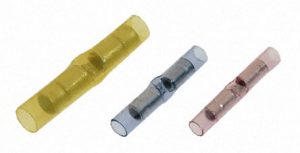
Splice connectors offer a convenient way to connect two wires. Rather than soldering the wires, you can place them in a splice connector. Its conductive properties will create a circuit by allowing electricity to travel between the wires. While all splice connectors feature conductive parts, though, they are available in different types.
Conductor Material
You should consider the conductor material when choosing splice connectors. Conductors are the metal parts through which electricity travels. Some materials offer a higher level of conductivity than others. With that said, highly conductive materials typically cost more than other materials.
Common conductor materials used in splice connectors include:
- Copper
- Aluminum
- Copper-clad aluminum
- Tin-plated copper
Crimping
Some types of splice connectors require crimping. After placing the ends of two wires in a splice connector, you’ll need to crimp them. Crimping involves the use of a handheld tool to partially collapse a splice connector. The splice connector will collapse onto the wires, thereby securing the wires in place.
Heat Shrinking
While some types of splice connectors require crimping, others require heat shrinking. They are made of a special type of plastic that shrinks when exposed to heat. After placing the wires in a splice connector, you can use a heat gun to shrink the connector’s plastic tubing.
Butt vs Knife Splice
There are butt splice connectors, and there are knife splice connectors. While they are both used to connect two wires, they are designed differently. Butt connectors consist of a tube with a conductive inner tube, whereas knife splice connectors consist of a tube with a conductive knife-like protrusion.
If you’re planning on disconnecting them, you may want to choose knife splice connectors. You can pull them apart to separate them and, thus, break the circuit. Butt splice connectors offer a more permanent solution. Since they typically require crimping or heat shrinking, you can’t pull butt splice connectors apart.
Size
Splice connectors aren’t one size fits all. Whether you prefer butt splice or knife splice — or any other style — you’ll need to ensure they are the right size for the wires.
Wire sizes and splice connector sizes are measured in American Wire Gauge (AWG). The higher the AWG, the smaller the diameter. When choosing splice connectors, make sure they will fit the wire with which you intend to use them.
In Conclusion
Splice connectors are available in a variety of types, each tailored for specific purposes. When shopping for splice connectors, you should consider the conductor material, whether they require crimping or heat shrinking, butt splice vs knife splice design and the size.



